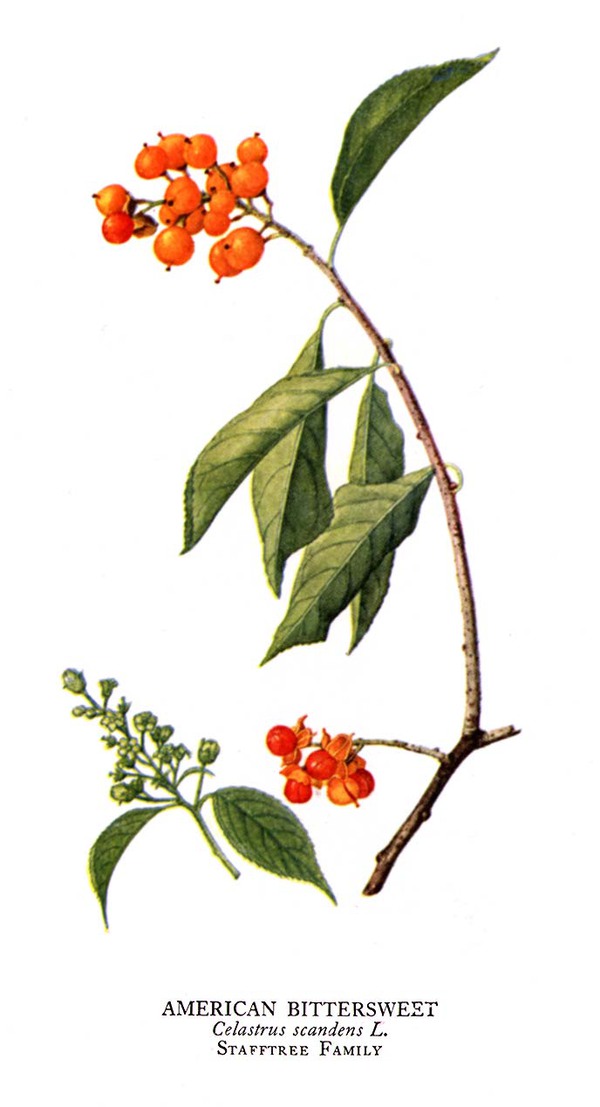
Common Name: Bittersweet | Scientific Name: Celastrus Scandens

Family Name: Celastraceae
Resources
Notes from the Eclectic Physicians
Notes from the Eclectic Physicians
1854: JOHN KING – CELASTRUS SCANDENS – FALSE BITTERSWEET
Properties and Uses – Alterative, diaphoretic, and diuretic, with some narcotic powers. Used in scrofula, secondary syphillis, chronic hepatic affectins, cutaneous affections, leucorrhea, rheumatism, and obstructed menstruation. Externally an ointment has been successfully employed in inflammed and indurated breasts of nurses. Dose of the decoction, from two to four ounces, three times a day; of the extract from five to ten grains.
1883: Scudder(alterative)
(The bark of the root of Celastrus Scandens)
Preparation – Tincture of Celastrus.
Dose – From five drops to half a drachm.
Therapeutic Action – Celastrus is described as alterative, diaphoretic, discutient, and emetic. Although employed by few, yet it is an indigenous remedy worthy of more extended notice than it has received at the hands of a majority of practitioners. The diseases in which it has been found especially beneficial, are scrofula, glandular swellings, secondary syphilis, mercurial cachexy, chronic cutaneous diseases, especially those of a scaly character, etc. As an alterative it may be employed in all cases attended with a depraved state of the general system.
1911: Fyfe
Cutaneous affections, chronic hepatic affections, leucorrhea, obstructed menstruation, glandular inactivity. Celastrus scandens is alterative, diaphoretic, diuretic, and slightly narcotic.
Disclaimer: The author makes no guarantees as to the the curative effect of any herb or tonic on this website, and no visitor should attempt to use any of the information herein provided as treatment for any illness, weakness, or disease without first consulting a physician or health care provider. Pregnant women should always consult first with a health care professional before taking any treatment.
